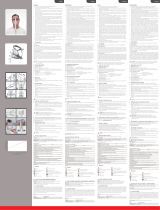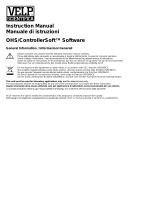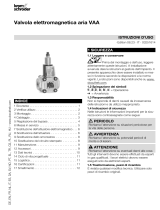
English 3
Clinical benefits
AcuCare F1-0 and F1-1
The clinical benefit of non-vented masks is the provision of effective
therapy delivery from a therapy device to the patient.
AcuCare F1-4
The clinical benefit of vented masks is the provision of effective therapy
delivery from a therapy device to the patient.
GENERAL WARNINGS
• As with all masks, some rebreathing may occur at low pressures.
• The mask must not be used without qualified supervision for
patients who are unable to remove the mask themselves.
• This mask is not for use on patients with impaired laryngeal
reflexes or other conditions predisposing to aspiration in the
event of regurgitation or vomiting.
• The mask should not be worn unless the ventilator system is
turned on and operating properly.
• Follow all precautions when using supplemental oxygen.
• Oxygen supports combustion. Oxygen must not be used while
smoking or in the presence of an open flame. Only use oxygen in
well ventilated rooms.
• If oxygen is used with the ventilator, the oxygen flow must be
turned off when the ventilator is not operating, so that unused
oxygen does not accumulate within the device enclosure and
create a risk of fire.
• At a fixed rate of supplemental oxygen flow (if used), the inhaled
oxygen concentration varies depending on the pressure settings,
patient breathing pattern, mask size selection and leak rate.
• The technical specifications of the mask are provided so you can
check that they are compatible with the ventilator. If used outside
specification or if used with incompatible devices, the seal and
comfort of the mask may not be effective, optimum therapy may
not be achieved, and leak, or variation in the rate of leak, may
affect the ventilator function.
• Discontinue using this mask if the patient has ANY adverse
reaction to the use of the mask.
• Using a mask may cause tooth, gum or jaw soreness or aggravate
an existing dental condition. If symptoms occur, consult a dentist.






















